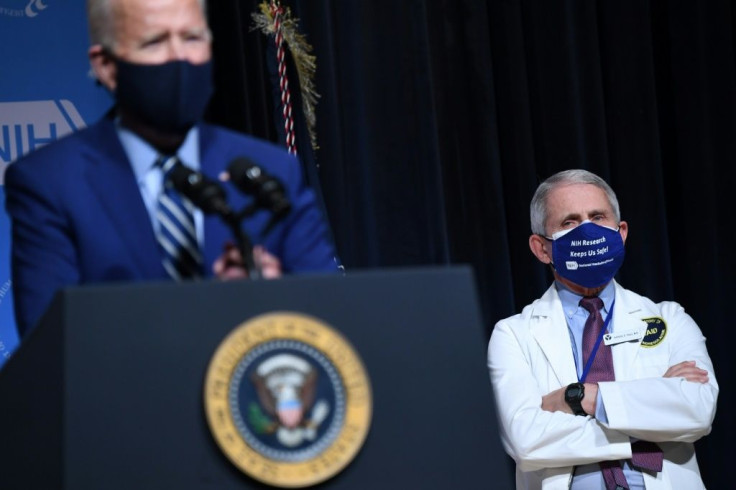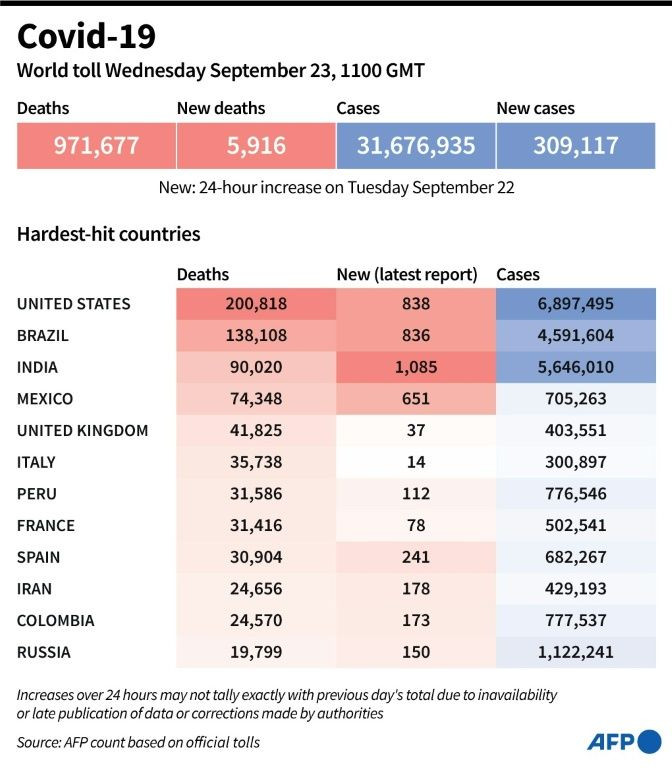US Nears 500,000 Covid Deaths
The United States was on the brink Sunday of the grim milestone of 500,000 Covid-related deaths since the start of the pandemic, as the nation's top virus expert warned a semblance of normalcy may not return until the end of the year.
Signs of hope were emerging in the rollout of vaccines and the dropping off of a massive winter spike in infections, but the heavy toll continues to mount in a nation that has reported the most fatalities and cases in the world.
"It's terrible. It is historic. We haven't seen anything even close to this for well over a hundred years, since the 1918 pandemic of influenza," Anthony Fauci, chief medical advisor to US President Joe Biden, said on NBC's "Meet The Press."

"It's something that is stunning when you look at the numbers, almost unbelievable, but it's true," he added, as the toll on the Johns Hopkins University tracking website stood at some 498,000.
After the first Covid-19 death was announced in the United States in February 2020, it took about three months to pass the 100,000 mark, during a first wave that hit New York particularly hard.
But as the outbreak spread across the country, the pace of deaths increased, with the toll jumping from 400,000 in just over a month amid a spike fueled in part by holiday gatherings.

Fauci noted that the number of daily new infections was on a steep decline after peaking in January, but he added normal life may still be some way off.
"I think we'll have a significant degree of normality... as we get into the fall and the winter, by the end of the year," Fauci said on CNN's "State of the Union."

Biden said last week the program to deliver vaccines into people's arms is as complicated as the already intense challenges of manufacturing them in huge quantities at speed.
"There has never, ever, ever been a logistical challenge as consequential as what we're trying to do, but we're getting it done," he said.
According to Biden, his goal of administering a million shots a day for a total of 100 million in the first 100 days of his presidency is on track to be easily surpassed, with a current average of 1.7 million vaccinations a day.
With the US death toll set soon to pass 500,000, Biden said he did not want to give firm predictions of when the crisis will be curbed.
However, he said that 600 million doses -- enough to provide the two-dose regimen to most of the country -- were expected to be ready by the end of July.
More than 61 million people have received at least one shot of vaccine in the United States, with some 18 million getting the full two doses.
The freezing weather and snow storms that hit the United States for over a week have slowed the nation's vaccine efforts, with some six million doses delayed.
"We've gotten two million (doses) out, and we project that by the middle of the week we will have caught up," said Fauci on "Meet the Press", calling it a "temporary setback."
Though concern has grown around variants of the virus, especially those that appear to spread more easily and render current shots less potent, Fauci sounded a hopeful note on whether another surge was coming.
"I don't think at all that it is inevitable," he told CNN. "The vaccines we are currently distributing now, the Moderna and Pfizer vaccines, work very well against the UK variant."
America might be past the worst of the pandemic, but the damage is deep and painful.
To illustrate this milestone of half a million deaths, The New York Times published a front-page graphic running the length of the page, with each small point representing a dead American.
The bottom of the column, which represents the deaths of recent months, is particularly dark and almost uniformly black.
© Copyright AFP 2024. All rights reserved.





















